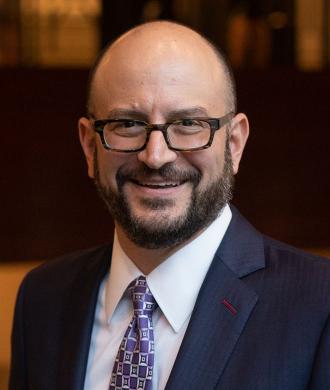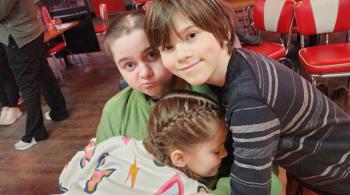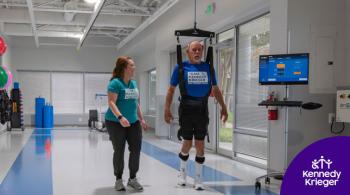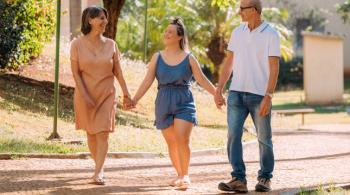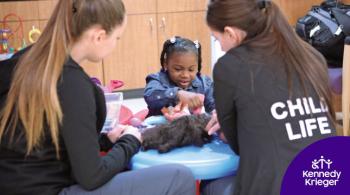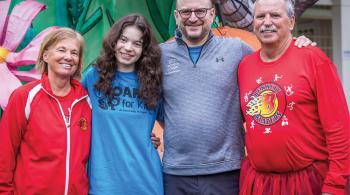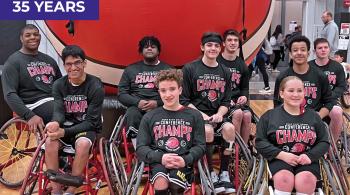Unlocking the Power of Early Childhood Education: Its impact on Lifelong Development
We’ve known for some time now that the first years of a child’s life constitute a very important period for the development of that child’s brain. Because the brain is responsible for cognition, language, movement, emotion, self-regulation, and essentially every aspect of human behavior, it stands to reason that optimizing those first few years can have a significant impact on the rest of that child’s life.
In this episode, Kennedy Krieger CEO and president Brad Schlaggar will be joined by colleagues Marcella Franczkowski, assistant VP and executive director of PACT, Sharon Holloway-Gentemann, the director of PACT World of Care, Dr. Jackie Stone, chief clinical officer as well as Sarah Monaghan, a parent of a graduate of PACT. The discussion focuses on how early childhood programs help optimize developmental outcomes, and will also look at some of the challenges faced by these programs and why such programs are so worthy of enhanced societal investment.
Resources
- Division for Early Childhood of the Council for Exceptional Children
- National Association for the Education of Young Children
- Developmental Milestones Checklist and Family Guidance from Early Head Start
- NAEYC – Questions to Ask Your Child Care – checklist
- National Association for the Education of Young Children - Readiness: Not a State of Knowledge, but a State of Mind
- Children's Defense Fund-State of America's Children 2023--Early Education
- Centers for Disease Control and Prevention (CDC) Public and Private Preschool Enrollment From 2019-2021 at Its Lowest Since 2005*
- Centers for Disease Control and Prevention (CDC): Fast Facts: Preventing Adverse Childhood Experiences*
- Kaiser Family Foundation: Disparities in Health and Health Care: 5 Key Questions and Answers*
Learn More About Kennedy Krieger Faculty & Staff Members Featured in This Episode
Learn More About Kennedy Krieger Faculty & Staff Members Featured in This Episode
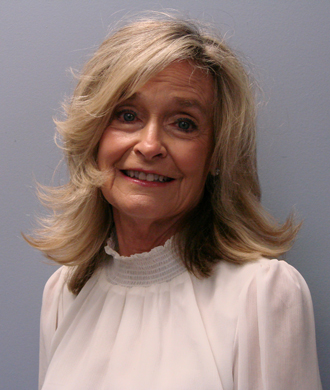
Marcella Franczkowski
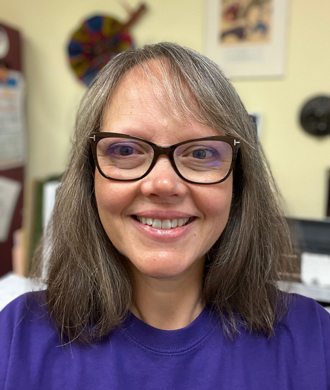
Sharon Holloway-Gentemann
View Episode Transcription
Dr. Brad Schlaggar (BS): Welcome to Your Child's Brain. A podcast series produced by Kennedy Krieger Institute with assistance from WIPR. I'm Dr. Brad Schlaggar, pediatric neurologist and President and CEO of Kennedy Krieger Institute. We've known for some time now that the first years of a child's life constitute a very important period for the development of that child's brain. Because the brain is responsible for cognition, language movement, emotion, self regulation, and essentially every aspect of human behavior, it stands to reason that optimizing those first few years can have a significant impact on the rest of that child's life. The basis for the claim that those early years are so consequential comes from decades of neuroscience research and clinical experience. Brain development for humans is a fairly protracted process extending for most of us into our early 20s. Now the window of opportunity to influence brain development does not slam shut after the third or fifth birthday. Nonetheless those early childhood years offer perhaps the most effective and efficient period for setting a child on the most successful path. That point is true for both typically and atypically developing children. In today's episode we will be focusing on early childhood development and education, specifically how programs focusing on early childhood can help optimize developmental outcomes. We'll also address some of the challenges faced by those programs and why such programs are so worthy of enhanced societal investment. It's my pleasure to welcome to the podcast three of my extraordinary colleagues from Kennedy Krieger Institute. They are; Marcella Franczkowski, Assistant Vice President and Executive Director of PACT, which is Kennedy Krieger's Early Childhood Development and Education Programs. Prior to joining the institute in 2023, Marcella served for 14 years in the Maryland State Department of Education with 12 of those years as the Assistant Superintendent, Division of Early Intervention and Special Education Services. Sharon Holloway is a licensed clinical social worker who is the Director of PACT World of Care at Kennedy Krieger Institute. Dr. Jackie Stone, a physical therapist with a doctoral degree in organizational leadership, is the Chief Clinical Officer at Kennedy Krieger Institute. Dr. Stone is an Assistant Professor of Pediatrics at the Johns Hopkins University School of Medicine. In addition we are pleased to have with us today Ms. Sarah Monaghan, parent of a graduate of PACT. Sarah first became involved with PACT in 2007 when she enrolled her daughter Elizabeth. Sarah and her family became advocates for children and their families with special health care needs by testifying before the Maryland General Assembly for support for funding and program development. Sarah joined the PACT Board of Directors in 2010 upon Elizabeth's graduation from PACT. Welcome all. Let's start by talking about the neuroscience of brain development in the first five years of life. Now a significant proportion of the brain's overall growth and development of connections happened during those first few years of life and that becomes a substrate for all of brain function and the foundation for establishing an optimal developmental trajectory for a given child. Now a full description of what we now know about those early years is beyond the scope of this episode and frankly could be the subject of many episodes. Suffice it to say decades of research demonstrate the disproportionate importance of those early years. Marcella, based on what we know of brain development, can you take us through describing what's meant by early engagement and if there are developmental concerns early intervention?
Marcella Franczkowski (MF): Early engagement is for all and early intervention for children with developmental changes or concerns are game changers. The secret sauce we say to prepare all children for kindergarten and not only kindergarten but beyond. We often hear that school readiness begins at birth. That is true. Just like treating our physical health, the same goes for our development. Focused on engaging a child with adults, with their peers, with their environment and with stimuli is critical in those early years. Forging those early parent child attachment our relationships is the key for all development. Early childhood education is about anticipating and responding to the needs of the whole child and the family. But in addition with early intervention where we're trying to specifically overcome a barrier to the child's development and learning we front load those services and we front load those supports whether that be nursing, therapies, specialized instruction, intensively as early as possible. This way we have the best chance of changing a child's trajectory, developmentally, and helping them to narrow those gaps that they might face between typical development and their own needs. Getting the child and the family the supports and services they need to be successful is the focus. I often say, start early and finish strong.
BS: From your experience defining and implementing early childhood programs really across the state of Maryland, what would you say are the most essential elements for effective implementation of such programs?
MF: Through my work, I have found that there are five essential elements that exist in highly effective performing early childhood programs. One of them and the one that I often put a lot of credibility to is the ongoing professional learning with coaching that grows that workforce. Any change effort, any support to children and families is only as effective as the personnel who must implement. The next is strategic collaboration. Strategic partners in the work they either bring fiscal support, they serve as a thought partner and/or they perform the work. Key community partners and contributors promote access and create that seamless support system for a highly effective teaching and learning. Another one, trusting family partnerships and I'd have to say that this is a shout out of a number 1. Recognizing that families are the child's first teacher and improvements for that child come from aligning what happens at school, what happens at the center and what happens at home and the community. The fourth is the data informed decision making. Speaks to an adage that I've always carried with me that what gets measured gets done. Collecting and analyzing child and program outcome data tells us what is working and when a change is needed. Data tells us how to act and that goes along with the final element and that's evidence based practices implemented with fidelity, with consistency. Using those strategies that have the backing of science to know they are effective but back to that data point also recognizing that there's never a silver bullet. We must individualize and customize what we do for the specific child. All programs should seek to continuously improve listen to the needs of the family, listen to the needs of the child, and listen to the needs of the community to reflect and respond. I believe these five elements are most often what distinguishes great programs from the rest.
BS: Jackie, PACT has a longstanding reputation for providing expert early care and education for children. Talk about the early childhood programs at Kennedy Krieger broadly and what's special about these programs?
Dr. Jackie Stone (JS): Today the PACT programs include a continuum of early education and learning opportunities for children and their families. They include the World of Care. It's a child learning program that supports inclusivity and integration of multiple services addressing the medically fragile and complex child and we serve children from the ages of about six weeks to five years of age with aftercare provided. The program has an array of service providers to include teachers obviously, nurses, physical therapist, occupational therapists and many more. The World of Care is located in Baltimore County near the Baltimore City line. Again focuses on access to learning for children with special needs. Families access that program from a variety of the surrounding counties. The next program is the Southeast Early Head Start Program which is a traditional federally funded Early Head Start program located in Baltimore City. It serves children 0-3 typically as Early Head Starts do. Southeast Early Head Start has a focus on parent, infant attachment and the infant social, emotional, mental health. The parent, child attachment is really one of the first forms of early learning that a child encounters. Lastly, PACTs newest program is a pre-K program focused on kindergarten readiness as are all the programs but with a focus on again inclusivity so there are children that are typically developing and children that are at risk or have developmental issues, equity to access and outcomes. This program is similar to the original PACT set up in that has funding from MSDE and is currently serving as a demonstration site to support the effectiveness of early education the most effective environment in which to provide the service, training, coaching, and mentoring for teachers and other providers and much more.
BS: Marcella, can you touch on what's new and what's growing and transforming at PACT that you've been part of PACT now for some months [LAUGHTER] and what's happening?
MF: Well, I joined PACT with a very deep respect for an excellent reputation. I must say that in the provision of nursing, therapies, childcare and a trauma informed model of care. As we move forward the focus has been on ensuring that we continue all the clinical and therapeutic interventions for children with complex needs while giving an equal focus on a child's educational pathway. It's this continuum that Jackie describes of services, supports, and programs that goes from a targeted and specialized intervention model to an inclusive and integrated universal model to meet the needs of any child who we serve. Guiding in this journey I think of three ins, inclusion, integration, and innovation. Inclusion, we have broadened our enrollment profile to actively recruit typical peers to learn side by side and their friends with diverse development. Research shows that this provides a multitude of benefits of all children, children with disabilities, and children without disabilities. Our program also serves a diverse early childhood population by not only disability and race and ethnicity, but also home language and family income. So we're truly looking at that inclusive model for all children and families. Integration, we are minimizing the silos among the existing programs to integrate the expertise that Jackie described for each program to build a continuum of early care and education across child care, Early Head Start, and our preschool environments, where all children can benefit from a plethora of services and supports, shared knowledge and expertise. Then last innovation, ensuring that the best of research is translated into practice, and that we're leading to create service models and an environment in a culture of innovation out of the box. This began, with the transformation with our physical environment or with interactive technology reaching and engaging families and external service provider wherever they are. I call it tele everything. We have telehealth, we have tele education, we have tele social emotional support and that removes all those barriers of access to our providers, to our children and their families. Program innovation, and that's the development of a child family learning plan for each child, with and without developmental differences. This process is typically reserved and thought about only for children receiving special education services yet an overall model that benefits every child and family.
BS: Picking up on that child, family learning plan that you just mentioned. Think of it as an innovative practice. Can you explain a little bit more about how the family's role in their child's program and then how PACT works to empower the family in their child's education?
MF: An informed family and an engaged family brings an exponential factor to a child's development. A family will set priorities about what is important for their child and their family to learn and develop. The individual child family learning plan, places families as active members of a team to identify those short term goals and co-implement strategies for growth to be used not only at school, but also at home and across the community. Empowering families to take an active role in the development, implementation, and evaluation of their child's education, is truly the change agent. Sharon, I noticed the other day walking through your center that you were facilitating a telehealth session. Can you please share that example with us?
Sharon Holloway (SH): Yes. We had a wonderful opportunity to collaborate with a family, and a multidisciplinary team of health providers. The family has been really struggling with appointments, because of travel, and being able to have a telehealth appointment with us there with her also gave her much needed support and encouragement. These were difficult conversations. She was navigating with the medical community with a lot of things that were new and being presented for the first time. And because our staff who take care of this child were in that meeting, telehealth meeting, with the parent and the medical professionals, they were really able to come up with a comprehensive plan, to move forward that I think would have been much harder to reach without that opportunity.
BS: Jackie, the benefits of this approach that Marcella and Sharon just described, they seem self evident, but I think on anybody's mind really would be how do we ensure equitable access to such programs?
JS: This might seem simple, but as you just said, Brad, they're challenging to achieve. Just noted in the CDC recently in August of this year, statistics regarding public and private pre-school enrollments are down significantly the lowest since 2005 and since the pandemic. And so we have to really think about how we can engage and facilitate enrollment, and to make enrollment to various programs, whether they're public or private, more accessible for children and the families. So many pre-schools have closed since the pandemic that I think it's challenging for many families to find the most appropriate place. In particular, when we're talking about children that may need additional needs, whether it's health or developmental. Maryland is actually, unfortunately, among the top states with a decline in pre-school enrollment from the CDC article. So thinking about what can we, meaning all of us as early childhood education providers across the country, across Maryland, what can we do to help ensure and facilitate equitable access and improved enrollment? One thing in thinking about it is meals for the child during the course of the day, whether they're serving breakfast, snacks, lunch et cetera. But then also, as many other organizations have done, not necessarily childcare, but other healthcare institutions. They've instituted food pantries for families that are enroll. And so thinking out of the box in terms of things that we can provide, is there transportation available to the center? That seems to be a major obstacle for many families. The center may not necessarily be around the corner. You may need to travel and then how do you get there? Medical care, as Sharon just gave the example of the tele health appointment. If your child has special needs and they have appointments elsewhere, you have to take time off from work, you have to pick them up, or they miss a day from pre-school to take them to that medical appointment. Is there a way we can integrate that within the context of the center, whether you're in a private setting or a public setting, to be able to allow that healthcare provider to connect in, to allow the family to connect in while they're at work. And so everyone gets the best of the best, most of all, the child gets the care that they actually need. Ensuring that there may be a home visiting component that's something that has been validated through various HRSA grants that home visiting really enhances a child's attendance in an early education program. Many years ago, we had home visiting as part of an early childhood education program. Those things have actually been disbanded, but many are thinking about bringing those back to their center. The last thing I will mention in terms of ways to ensure equitable access is that having the programs affordable or having vouchers or subsidies for families. Infant care is astronomically expensive, and what are ways that we can help mitigate some of those barriers as it relates to the financial costs for early childhood education programs?
BS: We mentioned this concept of children at risk. Can you unpack that term? What does it mean for what we say at risk?
JS: I would say that children at risk are really when I think about the social determinants of health that really impact someone's overall development. Those are areas that impact our overall health and wellness. They include where we're born, where we live, where we learn, where we work, where we play, where we worship, and where we age. Those are environmental issues that could put a child at risk. If that child lives in a community that is not safe, or if that child lives in a community where they may not necessarily, we hear the term food deserts, where the family may not necessarily have a grocery store nearby or around the corner, but there is a place nearby where they could just pick up fast food, that then shifts that child's nutritional intake and impact significantly. Thinking about the types of things in our immediate environment, in a child's environment that would place them at risk, it includes all of these items. Thinking about the constellation of the family, the family unit, whether or not everyone is healthy, whether or not other family members may be dealing with health issues of their own, whether it's a physical health issue or a mental health issue, would place that child at risk in terms of receiving the interaction, the attachment that they need to be able to grow and thrive.
BS: You mentioned, and we talked about quality of life and health outcomes. How do you adverse childhood experiences, like being a victim or a witness of violence or other traumatic events? How do those ACEs, as they're called, impact young children, and then later in life for that child?
JS: Adverse childhood experiences, or ACEs, as we call it, can harm a child's developing brain and nervous system and lead to lifelong mental health as well as other types of disabilities. ACEs can include things like experiencing violence or abuse or neglect in a child's environment, or experiencing violence at any point in their life, having a family member be hurt or attempt suicide. Situations that may place a child at safety, or impact their ability to bond with whoever their caregiver may be. All of these things. If you think about one ACE, two ACE, three ACE, it's an accumulative effect. Research has shown that ACEs have an impact on someone's lifelong overall health. Exposure to ACEs is often associated with an increased risk for health problems across the lifespan. We see those lifelong issues related to maternal health, whether or not there is an impact of pregnancy complications, an unintended pregnancy, or fetal death. We see ACEs associated with mental health issues, whether it's depression, anxiety, or anything else. We see ACEs associated possibly with infectious diseases. We think about HIV or sexually transmitted diseases. Then what we're talking about today, we see ACEs associated with opportunity as it relates to education, occupation and income. We typically never talk about that socioeconomic impact that early childhood education has, that leads on to further education, that leads on to someone's occupation. ACEs really can start very early, but then those lasting effects can be lifelong.
BS: Sharon, putting on your Director of World of Care hat, how do you see early childhood education programs helping to mitigate the negative effects that social determinants of health that Jackie just laid out can have on a child?
SH: There are some immediate things that the early childhood environment offers to children and their families. One is catching things early. So that could be anything from ensuring immunizations, and we know children who are informal programs have higher rates of immunization than children who are not before they enter kindergarten. We know that children who are in early childhood programs have more routine developmental screening and get referred for intervention earlier than children who are not. I think one of the most important things that Jackie was really starting to talk about is that the experiences children have, they build and they build and they build. Well, if you bring in a new experience, like in an early childhood setting where there's open ended play, there's responsive relationships, there's caring community with families, that builds a whole another pathway of experiences. That's where you get some of the mitigation. You're developing new brain pathways and giving children tools that they may not have otherwise had because of those ACEs.
BS: You mentioned, developmentally appropriate as a construct, which for young children obviously includes play. Let's dive in more, how does play help a child develop and learn?
SH: This is one of my favorite topics in the world, so I will try to keep it very succinct. If we think about, for us as adults, the opportunities that we have for play, they're few and far between, I think unfortunately. But when we're really at play, whether that's doing a puzzle, going to a concert or performing or playing a sport, we are all in. Our brain is active, oftentimes we're physically involved. We may share that experience with someone. We are thriving and we are learning. For little people, that is how they learn. Stand and deliver, rote learning, that is not what we need for our workplace in the world. For the creativity and the ingenuity and the teamwork, we need people who are thinkers, triers, explorers, experimenters, and play is the way to make that happen. That's where all of the whole child connections come together.
BS: Sarah, could you tell us about your child and your family and what first brought you to PACT's World of Care program? What special needs did your child have?
Sarah Monaghan (SM): We came to PACT when my daughter Elizabeth was about five months old. My husband and I were first time parents, and we were completely and totally unprepared for children, just in general, as many new parents are, but particularly unprepared for our daughter. She was supposed to be born in June and she was born in February, so she was almost four months early. She weighed a pound, 10-and-a-half ounces. She was a micro preemie. When we brought her home from the hospital, she required oxygen 24 hours a day. She was on a feeding tube with a pump. She also would regularly forget to breathe, so she had an apnea monitor and things like that. A lot of medication. We came to PACT because we recognized very quickly that we needed help. There's a saying, it takes a village to raise a child, but when you have a child with needs like that in your village, you need people who are qualified to help you to see the things that need to be recognized and to help you understand how to help this child. The specific thing that made it very clear to me that I'd like to share was, you had infants and toddlers come to my house. This was a day I was very proud because my daughter was alive, Number 1. Which was a big accomplishment every day, of course. She's sitting in her bouncy seat having just a little nap. Infants and toddlers comes in, they spend about three minutes with me and they nod and they shake their heads and they go, well, we're very concerned. I said why. They said, well, your daughter's four months old and she hasn't found her feet yet, and the bottom just dropped out of my world because I had absolutely no idea what they were talking about. I had no idea why that was important, but I could tell that it really was. I knew that this was something I wasn't qualified to address. As a parent who was barely getting by making sure my child was fed and had their medications and went to their doctor's appointments and we were really focused on survival. They rolled a little blanket up, put it under her feet, and 10 minutes later she was reaching for her feet just as they expected. But they explained that all of these milestones that other children could reach easily, in many instances, a child who was born very early like that had a lot of challenges with. We'd been told about World of Care. I reached out to Sharon and met with her and saw the center, and realized that this is what we needed, and that it really gave us a lot of hope.
BS: How is Elizabeth doing now?
SM: Elizabeth now is fantastic. She is 16 years old. She is learning to drive a car. She is a junior in high school, plays goalie for her JV soccer team. In fact, she was one of the captains this year. She's doing very well in school. She's taking AP classes, she's also taking some college level courses as well. We just took her on her first college tour. She's come so very far from where we started.
BS: That's wonderful. What advice would you give to caregivers and parents and early childhood educators broadly regarding early childhood education and development programs and opportunities?
SM: I think it's very important to recognize that the importance of early childhood education, and how significant that is in the shaping of a child's future. Had we not made the decision to bring Elizabeth to World of Care, I don't think she'd be the same child that she is today because we couldn't give her the type of therapies that she needed, the types of interventions that she needed on her own. For parents I would say, look for that care, advocate for it, for your children. For childcare providers, I would say what you're doing is incredible. Remember, those parents are a little fragile themselves. They really need you. We were taught how to advocate. We were taught how to think and how to be her parents by the staff at World of Care, by Sharon and her team. That's a lot of what made the difference for us.
BS: You have this vantage as a parent with lived experience. Now, also as a board member, could you share integrating across all those experiences what excites you about the future with respect to early childhood opportunity?
SM: I am so excited by the innovations that are making what PACT can do more accessible to children. By the innovations that are going to make it so much more available, so much more impactful. Things like Sharon described being able to have a telemedicine appointment that was not available when Elizabeth was a PACT, and it would have made a world of difference to us to have that support. Really, not just teaching us how to advocate, but being with us and helping us do so. I'm excited about the innovations that Marcella is bringing about the growth of PACT and the ability to really serve more children in the integration. I think it's all going to change so many lives and I'm so very proud to be a part of it and to be able to pay forward some of the experiences that my family has had and what we've received to others.
BS: That's what I'm excited about. Wonderful. Marcella, thinking about at the systems level, what it takes to implement programmatic vision. What are some of the most pressing needs right now to put into action these ideas? What would you say?
MF: I think the most pressing need to implement a high performing system of services is to recruit and sustain an effective and competent early childhood workforce. In our feedback sessions with staff, because this is a problem across the country. In our feedback sessions with staff, we learned that professionals who are valued both in terms of compensation and in terms of the investment in their learning are those motivating factors. That's a key to this program. Also, we learned that staff value a team approach, so they're not alone. Sarah's explanation of having that team of experts in that team to support the team themselves, need that support in that team and that's valued. And they thrive in an environment where the workforce has professional coaching, mentoring and resources that help them deliver on their job and we surely are set to do that. We know that there's a direct relationship between the staff's well being and the quality of service and the impact that they make on a child and family that they serve. Looking at the workforce and developing, that is the most pressing issue at this time.
BS: Earlier on, you used the term the idea that we have a demonstration site that this new integrated early learning education center is a demonstration. Can you describe what that means and why it's important to have a demonstration project and what the deliverables from that could be.
MF: We're establishing a center as a model early childhood development and education demonstration hub. We want it to be an exemplar to build the workforce that others look to when learning best practices in serving a very diverse population of young learners. As Jackie said, from four weeks through four years of age, if the early childhood community does not see the work in action, then they do not know what is possible. We believe and know that every child has gifts and that every child can and will learn. We are setting that demonstration site to show that. We are building an education culture of innovation, infusing those cutting edge technology and those techniques to promote that strong development. And also to look at highly effective early intervention for those who need it. But we recognize, Brad, that our duty is beyond the children enrolled in our walls, so that's the beauty of the demonstration site, but to society at large. While the field of early learning is rich and rewarding, it still is facing that enormous challenge coming off COVID. This is a universal situation. The center will be our commitment to define new strategies, a structure and a system that works directly for our children, but can serve any child throughout the country. At the same time, I think another part of our demonstrate is to show how we deal with partnerships and how partnerships can support you. We're dealing with that pipeline of community colleges, universities to provide that pipeline in the field. Be it those who ultimately work here or gain valuable skills through internships that they take them to other locations. Sharon had an opportunity of having an intern with her, and that intern has really moved us through and has learned by, and has really demonstrated that we can teach and apply in other settings. Sharon, do you want to share your intern experience?
SH: We've had a host of interns here at PACT and it's been a really rich experience for them and for us. It reminds us of the nitty gritty of how we do the work. Just as inclusion is a beneficial model for all children, having internships and on site learners is a benefit for all. We get to refine our practice. But it also creates pathways and opportunities to take our work out into the world when our interns leave us and are in other places whether it's other childcare settings, human services, health fields, the knowledge we are able to share in those techniques travels with them and so it really can't broaden our reach. I think the idea then of having a model demonstration site will only enhance and expand those opportunities to broaden opportunities and experiences for families.
BS: Marcella here in Maryland, we talk a lot about the blueprint for Maryland's future. We refer to it simply as the blueprint. This, of course, is legislation that was passed in 2021 that lays out the direction for Maryland's public education for the next decade. I know inside of the Maryland State Department of Education, you lived and breathed that blueprint as it came to exist. How do you see the work at PACT contributing to the aims, the aims that are laid out clearly in that blueprint?
MF: I would really like our center to be the implementation of the blueprint. What does the blueprint look like in implementation and in operation and in action? I can share with you that we are directly aligned and preparing to support the implementation of the pillars that have been defined in the blueprint. We're implementing the new inclusive preschool program, Early Head Start attachment-based trauma informed model of care and we have a top level Maryland Excels childcare facility, as you know, the state's rating system, all providing that early intervention focus for under resourced populations and is defined in the blueprint as one of the state's pillars for achieving that long term educational success for all young children. On the blueprint also has a major emphasis on workforce development. This includes our connection as an evidence based demonstration hub, as well as implementing a train coach, train professional development model, so direct alignment in workforce development. Then another blueprint pillar speaks to supporting all students to be successful. As you hear Sarah reference and Sharon reference on the supports that are here, the experts that are here, what this research has shown us in the demonstration of the blueprint for us to be the implementer of this work. Very excited to have that opportunity.
BS: Jackie, you've spent a lot of time and energy thinking about what it takes to fund early childhood education programs. What are the challenges there? Can you tell us about the funding mechanisms and how they interact with programs like we've been describing today?
JS: The funding for early childhood education programs is very challenging in particular, when we're thinking about this demonstration. If we think about all of our state and federal agencies that have some component of early childhood or education attached to them. The number and the array of agencies and entities is vast. What typically happens when we think about demonstration projects like this? The funding could come from one agency, it could come from another agency. It can come from a third or fourth agency. But that funding is not sustained. It's actually what they call annual grant funding, which requires a competitive renewal and application process year after year. As we're thinking about development of this demonstration site, which we hope will be a model hub for the entire state of Maryland, that requires sustainability. Some commitment that says, this is something that we need as a community, as citizens in the State of Maryland, and requires an investment so that it becomes a core component of what the state offers. When we think about other childcare centers, whether they're public or private, thinking about having a hub like this can really work to offer additional funds to those particular entities because they have a central hub to come to for training, for mentorship that we can utilize various technologies to continue to enhance the quality of childcare and it could be a typical early childhood home. We really just need to think about connecting the dots and creating more partnerships and stronger collaborations to continue to fund services as well as the core components that are required for early childhood education.
BS: Marcella, just for our last question, as we reflect on the implementation of an effective early childhood education program, we see not only the benefits to children, but also families and more broadly to society. Can you speak more to the ways these benefits are visible or can be measured?
MF: There are many global benefits of an effective early childhood education program. In fact, the value of early childhood has been calculated through a return on investment model. We know Nobel Prize economist James Heckman has calculated an average $13 return on investment for every dollar that is spent on effective early care and education. This stems from a reduced need for later costly education services like special education, as well as reduced incarceration rates, reduced health inequities, and improved lifelong earnings and quality of life. Investing early minimizes the costs later. These benefits also spread directly to impact our families and communities. Families cannot work if they do not have dependable, impactful, and available early care and education programs. Especially for programs of children with significant needs and families who are under resourced. Early care and early childhood programs allow caretakers and families to remain in the workforce, to sustain their family, and to contribute to broader economic growth through taxes and spending. Overall, forging partnerships between family and the education team predicts successful outcomes for the child and a supportive family, and that is, of course, a happier family.
BS: Those points, especially around the idea that parents can go to work, has to be really emphasized, that the consequence for the entire family is really key in addition to all the other consequences that you just described. I have to say that to put in context that say $13 return on investment, that's comparable to what famously is the NASA, the space program's return on investment. These are powerful consequences, so I really appreciate that point. I want to say thank you to our guests. We hope that you, our listeners, have found this discussion about early childhood education informative, interesting, and helpful. Please check out our entire library of topics on your child's brain at Wypr.org, KennedyKrieger.org, Wypr.org/Studios, or wherever you get your podcasts. You've been listening to Your Child's Brain. Your Child's Brain is produced by Kennedy Krieger Institute with assistance from WYPR and producer Spencer Bryant. Please join us next time as we examine the mysteries of your child's brain.

